Last month, I had the privilege of touring Israel with Vibe Israel and some of my favorite baking bloggers to learn all about Israeli pastries, sweets, and desserts. It was there that I had my first bite of malabi, a Persian milk pudding. It was perfectly light and creamy, silky and delicious—the very definition of a good pudding. In Israel, they top malabi with a rose water syrup (that’s so vibrantly pink that it doesn’t need an Instagram filter!), along with a generous sprinkling of peanuts and shredded coconut.
Truthfully, I was surprised to find malabi in Israel in the first place. From my understanding, malabi originated from Persia—I’d first heard about it on my trip to Turkey last year—and featured more prominently in Arab cuisine. But I’d also underestimated how multicultural Israel was, and how much of its cuisine is interwoven with that of its surrounding neighbors. One of my favorite things we did on our trip was visit Hatikvah Market in Tel Aviv, where we saw and experienced the extent of this diversity. At Hatikvah Market, we sampled börek and katmer from a Turkish bakery, kubaneh and jachnun from a neighboring Yemenite one, amba and different types of kubbe from an Iraqi deli, lepyoshki bread from Uzbekistan, and cups of Iranian faloodeh. Not to mention that there were lots of traditional Israeli pastries like babka and challah, too. All of this wouldn’t have been possible without the expert guidance from our tour guide, Moni from Bhuka Tours. Moni actually lives in Hatikvah and it was such a joy and privilege to learn about everything from the point of view of somebody with such love and pride for the neighborhood.
Everything was delicious, but I just couldn’t get the malabi out of my head. I’m usually pretty resistant to sweets and desserts flavored with flowers. It’s a fine line using those extracts, and a heavy-hand can lead to a soapy tasting desserts. But this malabi was perfect. It wasn’t too sweet or overwhelmingly floral—the floral rose water is balanced out perfectly by the silky cream of the milk pudding.
So of course, I’ve been trying to reverse-engineer the recipe since arriving back home. While researching recipes, I learned that malabi has different names (also “muhallebi” and “mhallabiyeh”), and is made with different types of flours (rice flour, cornstarch, etc) and milks (almond, coconut, regular), all depending on the region or country you’re from. For my recipe, I chose to make an Israeli-style malabi, which is made with a combination of milk, cream, and cornstarch. Traditional recipes also use pomegranate syrup or molasses to give the rose water syrup’s distinctive pink color. I initially started out with these ingredients, but kept ending up with syrups that were too tart and overwhelmed the malabi’s delicate flavor (not to mention too dark in color, too). Eventually, both Moni and Majid from The Cinnaman saved me and let me in on the secret to modern malabi syrup: food coloring, lol.
With the mystery of the rose water syrup concluded, I’m happy to report that this malabi looks AND tastes pretty similar to the one I had in Hatikvah Market. But is it as good as the real thing? I honestly think I need to go back to Tel Aviv and find out. Who’s coming with?! ????
A big thank you to Vibe Israel; although I wasn’t given compensation for this post, Vibe Israel organized our entire pastry-focused trip to Israel, including airfare, transport, accommodation, workshops, and tours. Our Hatikvah Market tour with Bhuka Tours was one of the activities of the trip. I feel like I barely skimmed the surface of what we did at the market, so I encourage you to learn more about Hatikvah Market here, here, and here. I also highly recommend taking the food tour if you happen to find yourself in Tel Aviv; our group all unanimously agreed that Moni was one of the best tour guides we’d ever had. All photos in this post were my own, with the exception of the baklava and kubaneh—those photos were taken by our talented group photographer, Amir Menahem.
Some baker’s notes:
- For this recipe, it’s important to use rose water and NOT rose extract. Rose extract is far more concentrated than rose water, and will make your malabi taste like soap. If you insist on using rose extract, I would decrease the recipe’s quantities significantly, down to 1/4 teaspoon. And because rose water is so delicate, it’s important to add it to both the pudding and syrup after they’ve been cooked and cooled slightly. Cooking with rose water will cause it to lose much of its fragrance and flavor quickly.
- Alright, let’s talk about the hot pink rose water syrup. According to Majid, the color is from Wilton’s Rose Paste. I didn’t have any on hand, so I ended up using Americolor’s Deep Pink from their Nifty Fifty Gel Set. With food coloring, always start by adding a few drops at a time and whisking. Keep adding drops until you achieve your desired color. I’ve given an approximate amount of the coloring I used for this syrup (I ended up using way more than I thought I would!)—the syrup looked almost orange in its bottle, but turned out pink when spooned over the white malabi. The more you spoon over the malabi, the pinker the syrup will be (I was pretty conservative with mine, as you can see from the pictures), but watch out! You might end up with a super rose watery pudding. You’ll likely have some rose water syrup left over.
- Because malabi is made with a higher-than-usual cornstarch to liquid ratio, so it can be hard to ensure that the cornstarch fully dissolves. Other recipes, including Yotam Ottolenghi’s recipe in Jerusalem, even encourage you to use your hands to dissolve the cornstarch clumps. But I’ve found that there’s no need for that—just make sure to follow my instructions about whisking the cornstarch into the milk slowly, tablespoon by tablespoon. Similarly, because the pudding contains so much cornstarch, it’s important to cook it for the time specified in the recipe in order to cook out the taste of the cornstarch. Undercooked malabi will have a starchy taste and you deserve better than that.
Get the Recipe: Malabi
Ingredients
For the Malabi
- 2 cups (16 ounces) whole milk, divided into 1/2 cup (4 ounce) and 1 1/2 cups (12 ounces) portions
- 5 tablespoons (1.5 ounces) cornstarch
- 1/2 cup (4 ounces) heavy cream
- 1/4 cup (1.75 ounces) granulated sugar
- a pinch of kosher salt
- 1 1/2 teaspoons rose water (see baker's notes)
For the Rose Water Syrup
- 1/2 cup (4 ounces) water
- 1/2 cup (3.5 ounces) granulated sugar
- 1 1/2 teaspoons rose water (see baker's notes)
- 1/8 to 1/4 teaspoon pink food coloring (see baker's notes)
For Serving
- shelled pistachios, roughly chopped
- shredded coconut
Instructions
For the Malabi
- Place a fine mesh sieve over a medium bowl.
- Pour 1/2 cup (4 ounces) of the milk into a small bowl or liquid measuring cup. Whisk cornstarch into the milk, one tablespoon at a time, only adding the next tablespoon once the cornstarch has fully dissolved.
- In a medium, heavy-bottomed sauce pot, combine the rest of the milk and the cream, sugar, and salt. Cook over medium heat, whisking occasionally to dissolve the sugar, just until the milk starts to boil, 2 to 3 minutes. Reduce the heat to low and immediately pour in the milk and cornstarch mixture, whisking slowly but steadily for 3 minutes more. The mixture will thicken and should have a texture similar to cake batter.
- After 3 minutes, remove from heat and pour the pudding through the fine mesh sieve and into the bowl. Discard any lumps in the sieve. Use a rubber spatula to stir in the rose water.
- Once the rose water is incorporated and the pudding is fragrant, divide the pudding evenly between 4 ramekins (each ramekin should have around 4.5 ounces). Press a small piece of plastic wrap directly on the surface of the pudding in each ramekin. Refrigerate for at least 4 hours before serving, preferably overnight. The malabi will keep in the fridge for up to 1 week.
For the Rose Water Syrup
- In a medium, heavy-bottomed sauce pot, combine the water and sugar. Whisk to combine and dissolve the sugar. Bring to a boil over medium-high heat, boiling for 1 minute total. Remove from heat and cool for 5 minutes.
- Once cooled slightly, whisk in the rose water. Add pink food coloring, 1 to 2 drops at a time, until the syrup is a bright, neon pink—the final syrup will look more orange, but you can test its color by spooning a little bit onto a white plate. Once happy with the color, pour into an airtight container with a lid. The syrup will keep at room temperature for up to 3 days, and in the refrigerator for up to 2 weeks.
Asssembly
- Before serving, spoon around 1 teaspoon of rose water syrup over each serving of of chilled malabi. Garnish with pistachios and coconut. Serve immediately.


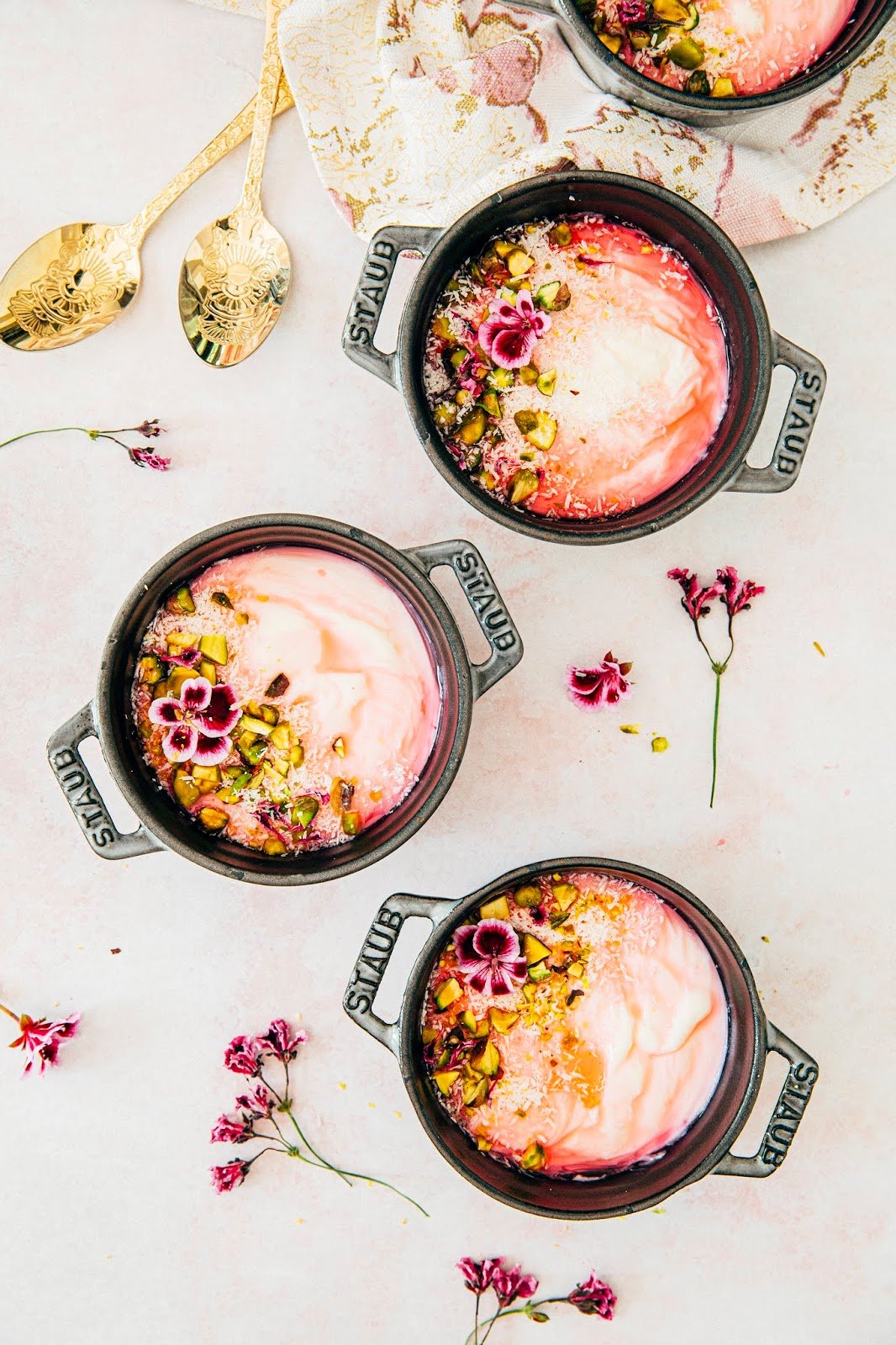
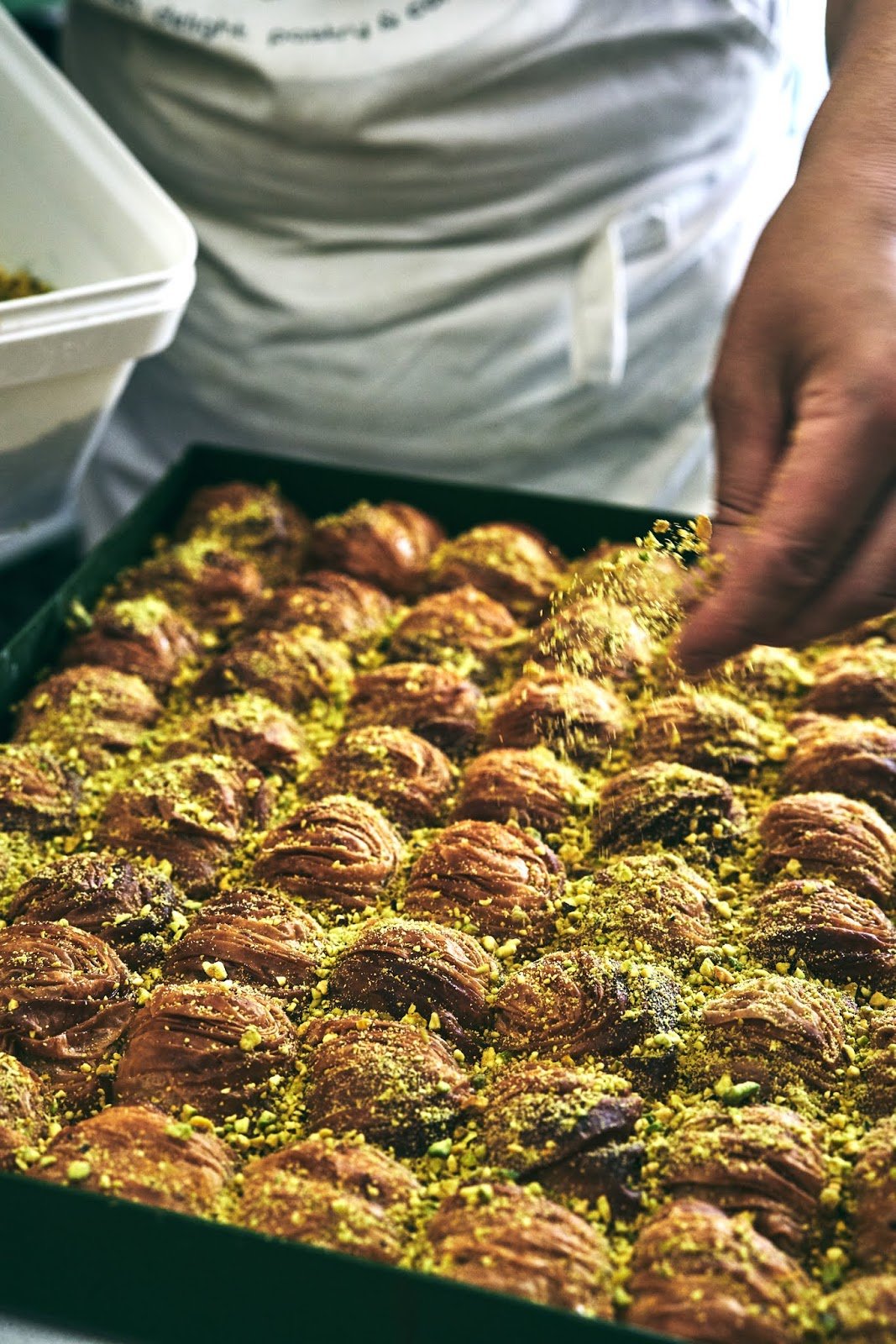
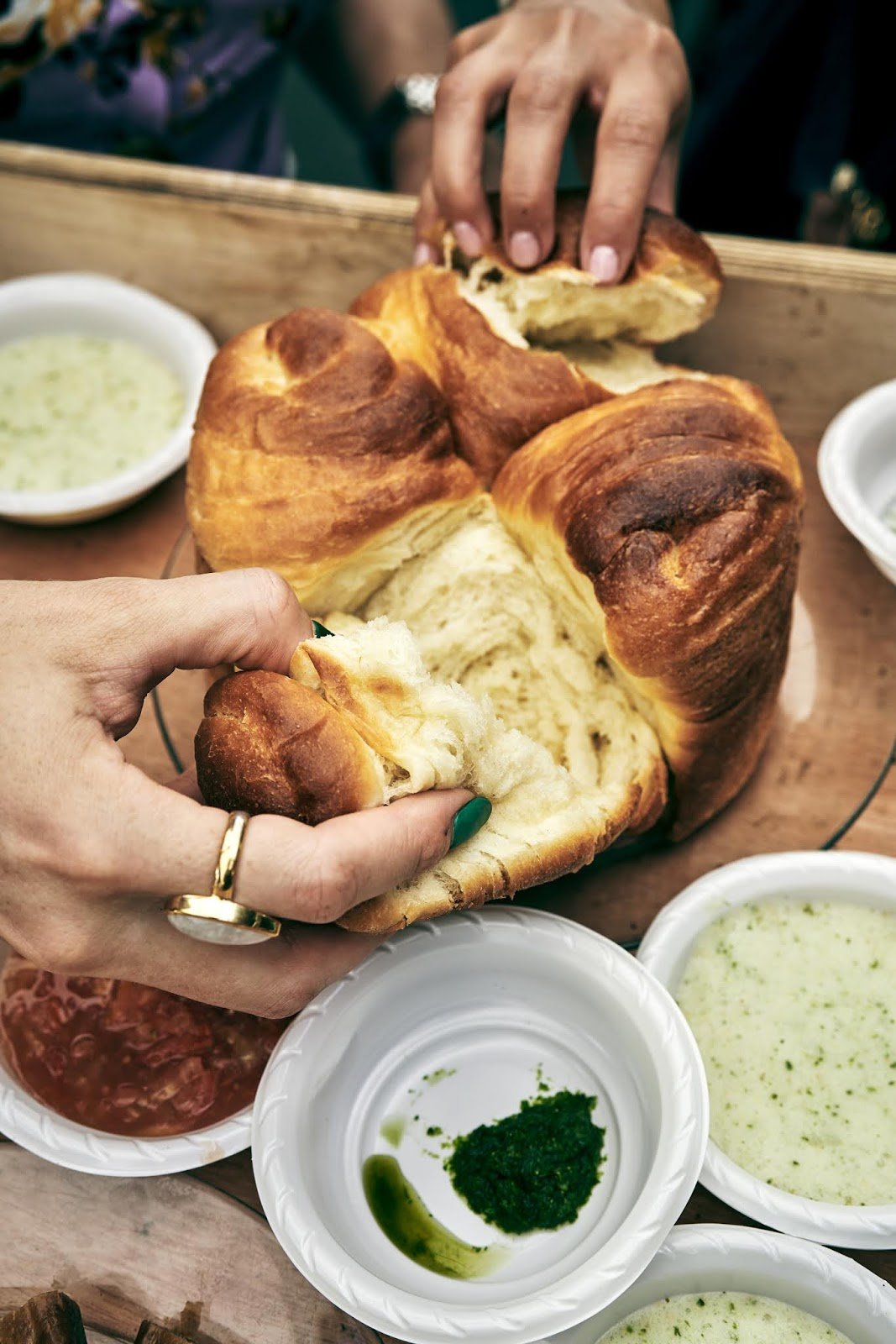
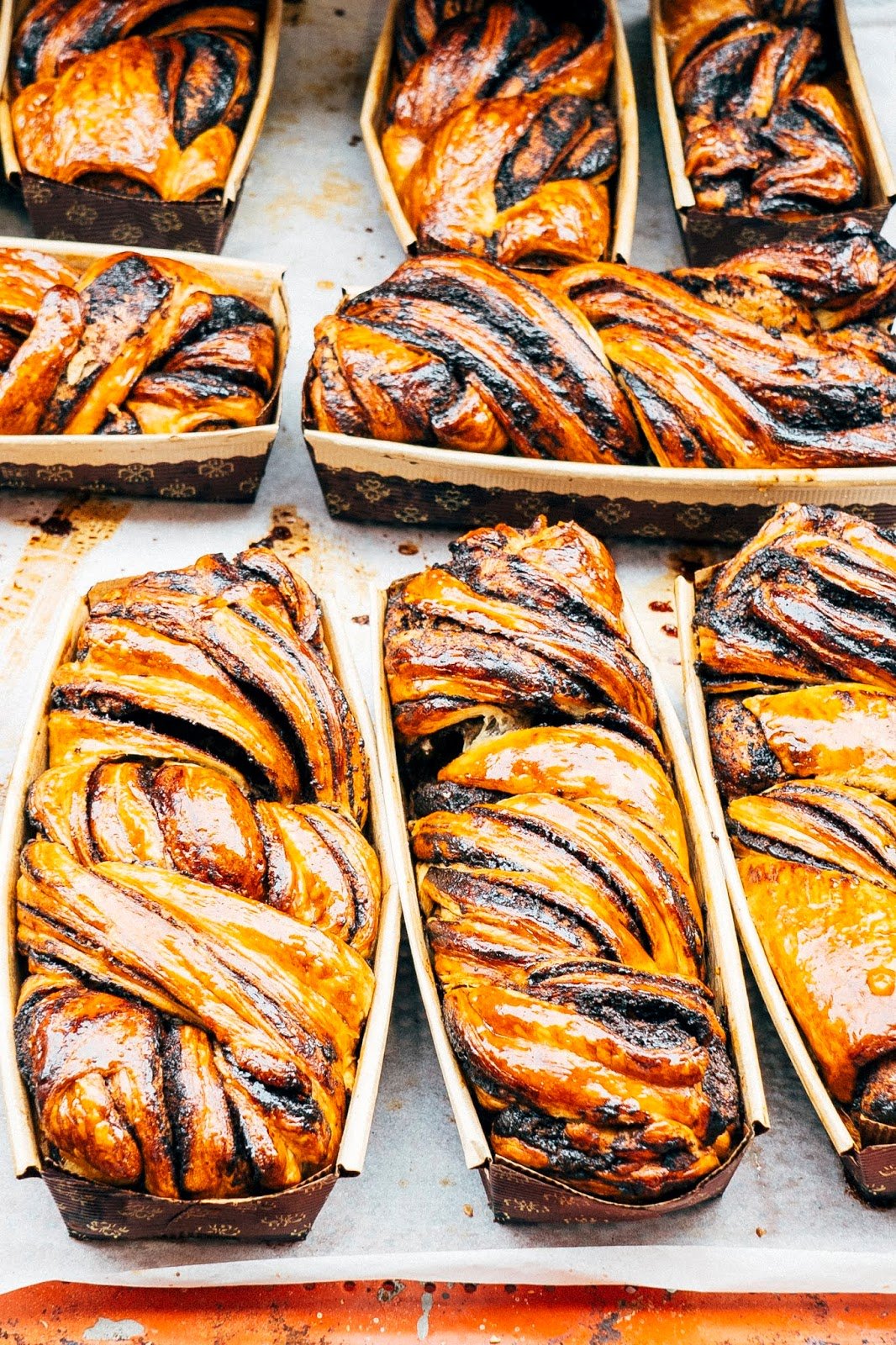
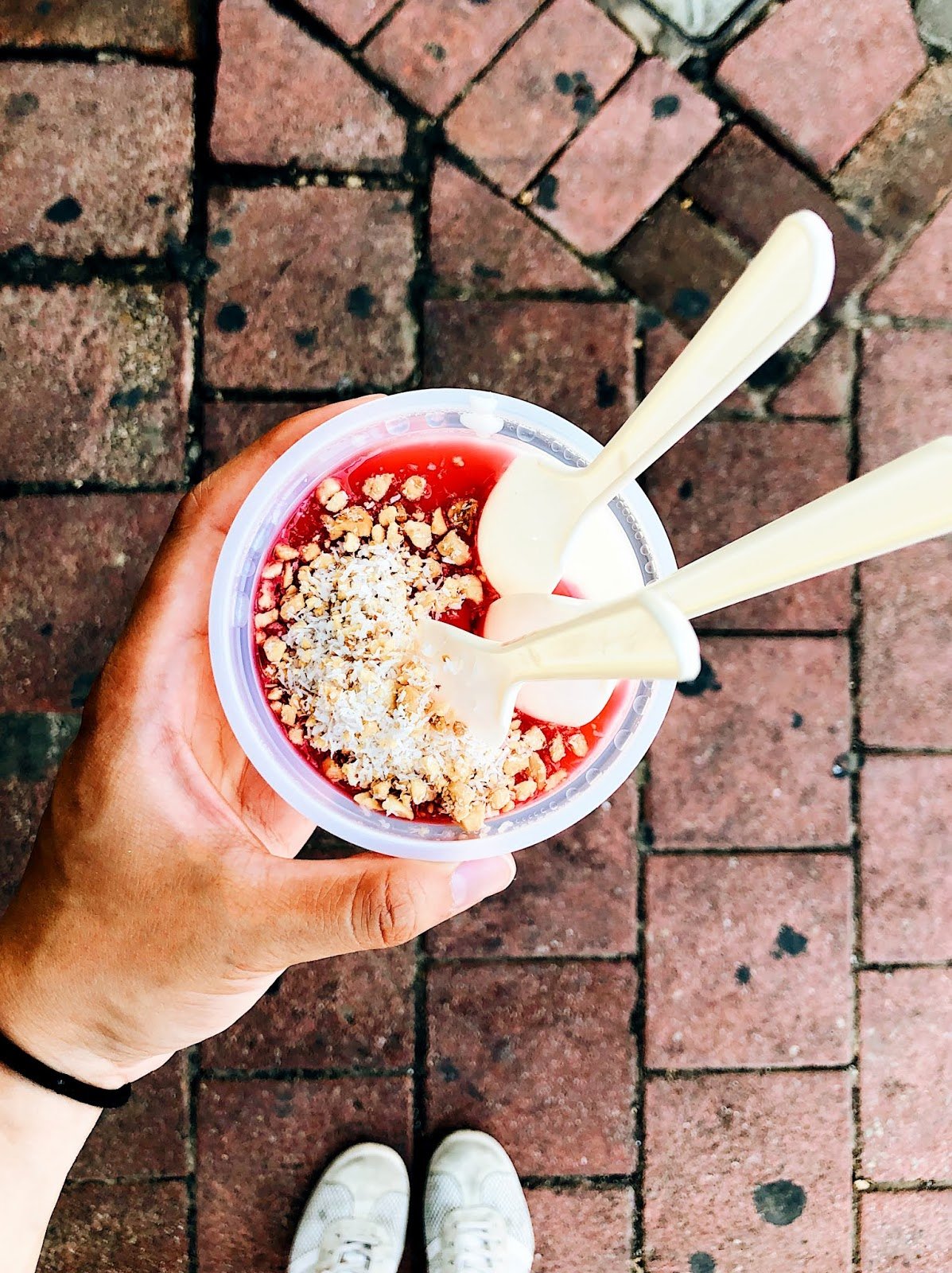
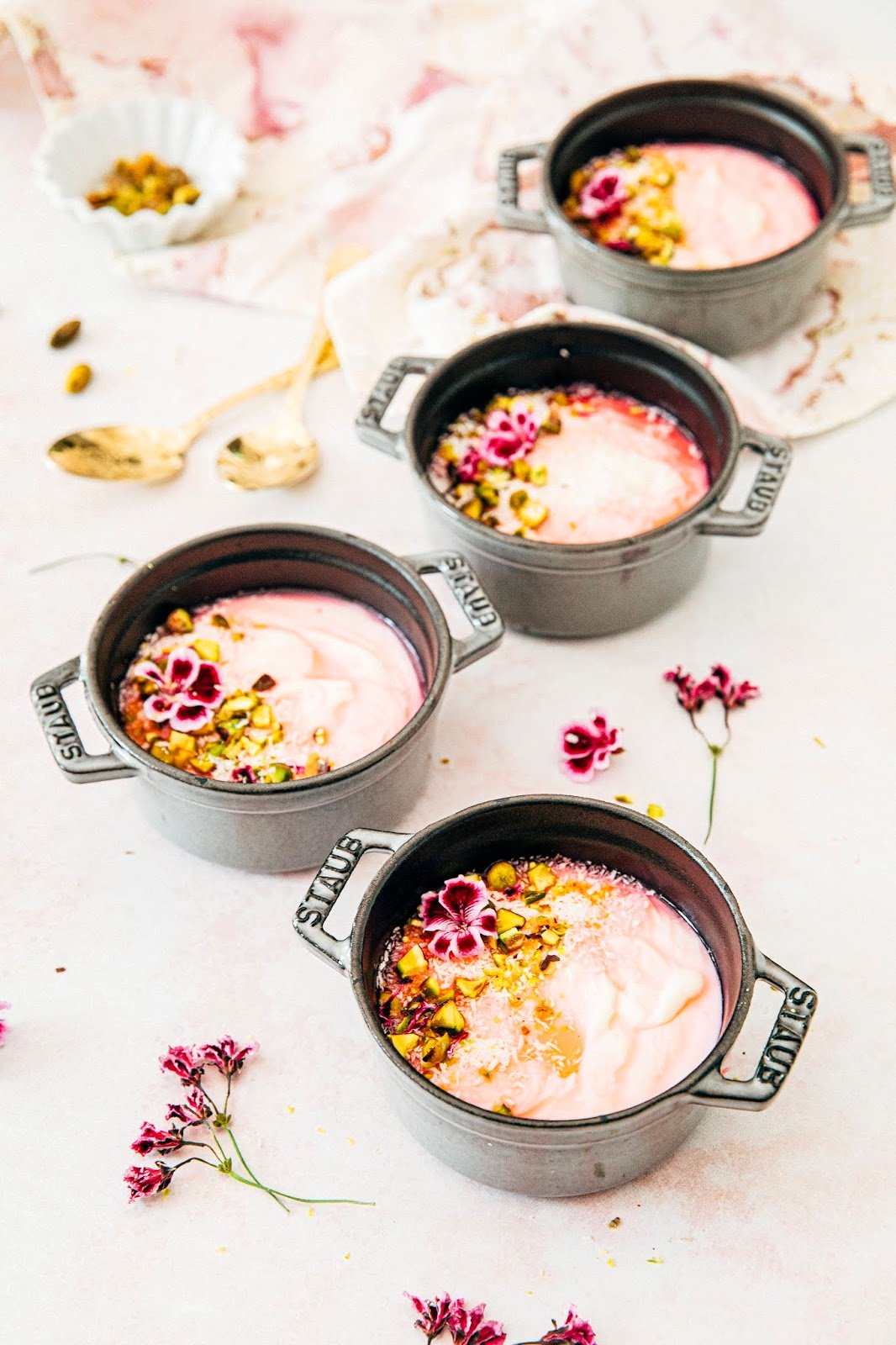
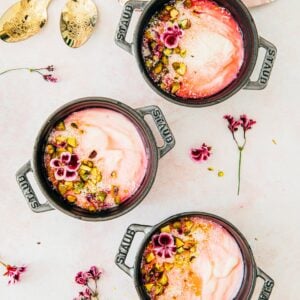

Michelle, this recipe is the REAL DEAL!!
I doubled it with no problems and didn’t even need to run through the sieve, your instructions yielded a perfect, silky smooth pudding. Also, the amount of rose water was spot on! It tastes exactly like the Malabi I know and love from my summers in Israel. Thank you so much. 💙
So disappointed to find this apartheid state paid for promo piece wrapped in the innocent layer of a recipe 🙁
Valid! I’ve learned a lot since then. At the time, I was genuinely excited about the trip as a way to connect with the Jewish side of my family. That said, I do not condone Israel’s genocide of the Palestinian people, and I stand firmly with Palestinian liberation. Sharing this recipe was never meant to be a political endorsement, and I regret if my past framing suggested otherwise.